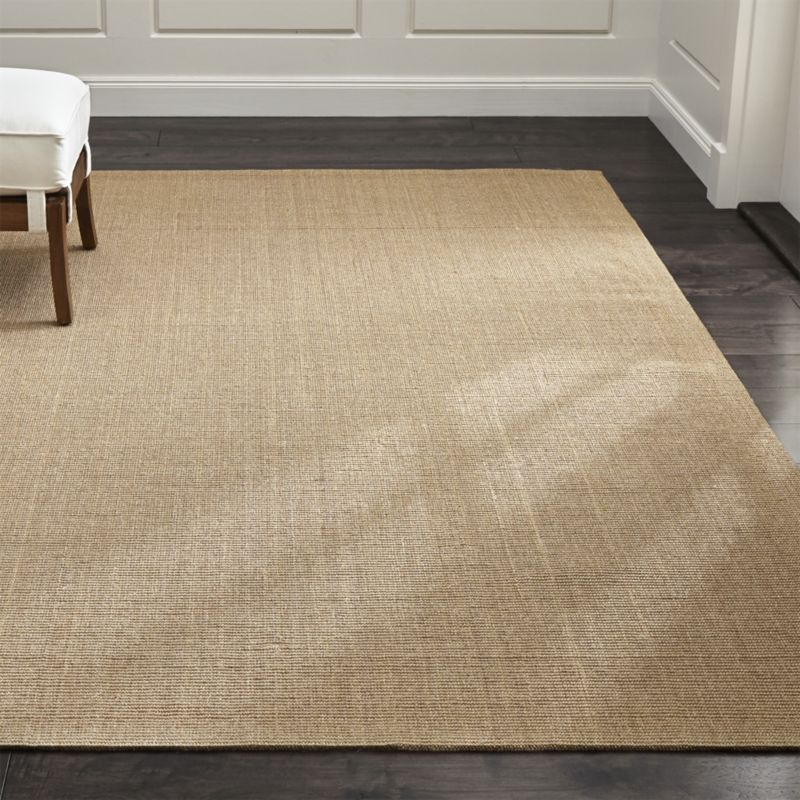Area rugs can warm up and add color, pattern, and texture to any size room. You can effortlessly change a room’s aesthetic appeal and feel from one season to another by simply replacing the area rug. Follow these seamless tips for cleaning an assortment of rugs. Rug Care is determined by size, construction, and material. Outlined below are essential rug care tips for a variety of area rugs.
Basic Care Tips
Rug Care Tip #1: Storing – When storing an area rug (mainly a heavy winter rug), have it professionally cleaned and wrapped before storing in a climate-controlled area to avoid damage.
Rug Care Tip #2: Care Tags – When you buy a new area rug, keep the care tag intact, or file it with your household maintenance and furnishings file for later reference.
Rug Care Tip #3: Large Rugs – Take care of large size room rugs as you would wall-to-wall carpet. High-end Oriental area rugs and other unusual materials, however, require special tentative rug care.
Rug Care Tip #4: Small Rugs – Small rugs, such as those used at entrances, are difficult to vacuum. Take them outside and shake them vigorously until dust and dirt are no longer evident. (Some cities have ordinances against this once common practice.) You can also hang rugs over a clothesline or sturdy outdoor furniture and beat them with a broom to remove dust and dirt.
Rug Care Tip #5: Dry Cleaning – Our rug cleaning specialist always consult care labels for small rugs, determining whether they should be dry-cleaned, spot-cleaned, or laundered. If your rug, even a cotton one that appears washable, is labeled dry-clean only, it may not be colorfast. Imported area rugs tend to require dry cleaning; colors may bleed otherwise.Our rug cleaning specialist recommend that you test it before spot cleaning.
Rug Care Tip #7: Drying Wet Rugs – Our rug cleaning experts recommend that you hang wet area rugs over a clothes-drying rack, a slatted picnic table, or several bricks stacked on a porch, patio, or breezeway. Hanging a wet rug over a single clothesline will distort the shape of the rug as it dries. Small rugs that are made from synthetic fibers similar to carpeting can be laid to dry on a small worktable or counter that is protected by a drop cloth, old sheets, or towels.
Rug Care Tip #8: Pet Concerns – When pet hair accumulates in an area rug, brush the rug forcefully with a stiff clothes brush or utility brush. Brush with the nap until dirt and hair cease to come out. Attack pet stains with a commercial enzymatic cleaner to help break down stain and odor.
A variety of materials and methods are used to create area rugs. If you purchase a rug at an antiques show, flea market, or garage sale, find out all you can about the material composition and recommended care for each rug.
Follow the instructions below to care for some of the favorite area rugs used in decorating.
Woven and Braided Rugs

When dealing with woven and braided rugs, our Orange County Rug Cleaners recommend that you check for stitching breaks before and after cleaning woven or braided rugs. Additionally, check labels to determine whether small area rugs are washable.
Oriental Rugs
Vacuum new handmade, hand-knotted, antique, and Oriental rugs as you would carpet and wool area rugs. Use special care with delicate vintage or antique rugs by following these guidelines.
Special Vacuuming Tip: Lay a piece of nylon screen over the rug and weight it around the edges with books or bricks. Vacuum over the screen. The dirt will be removed while the screen protects the rug from the vacuum. Alternatively, tie nylon mesh over the vacuum attachment and change the mesh frequently as dirt accumulates.
Stains: Instantly treat wine and other beverage spills with club soda; use baking soda to soak up gravy, sauces, and liquid foods. Consult an Orange County Rug Cleaning professional for a more complete list of food stain removal tips. If the area rug sustains heavy traffic, have it professionally cleaned annually; rugs in other locations can be cleaned every few years. Rug dealers may offer cleaning services or referrals.
Rotate Rugs to ensure even wear; direct exposure to sun will cause fading. Be sure to find appropriate window treatments to safeguard valuable rugs from sun exposure, or install UV blocking window films.
Coir and Sisal

Rugs made from coir (coconut), sisal, rush, grass, and other natural materials tend to have an open weave, allowing dirt to sift through to the floor beneath. Vacuum frequently. Remember that water weakens the fibers. When washing stains, work quickly and dry thoroughly to extend the life of these natural rugs.
Vacuuming: Remove the rug occasionally to vacuum the floor. If possible, take the rug outside and gently beat it to loosen dirt trapped between the fibers. Many of these rugs are reversible; flip rugs over each time you vacuum for even wear.
Stain Cleaning: To clean stain or discolorations on a room-size natural fiber rug, leave the rug in place, protecting the floor beneath with a plastic drop cloth and towel. Move small rugs to a protected counter or table to clean. Scrub the stains with a soft brush dipped in soapy water. Rinse with clear water. Place a towel over the wet area. Blot the cleaned spot as dry as possible. – Use a portable fan or hair dryer to speed drying.
Sisal Saver Tip: Some natural fiber rugs are constructed in squares that are sewn together. Buy a few extra squares or a smaller size of the rug. If a rug square is stained, clip the threads that hold it in place, replace with a new square, and hand-stitch with heavy-duty carpet thread.
Fur and Sheepskin

Shake unscented talcum powder over a fur, sheepskin, and hair-on hide rug and leave for several hours. Brush the talcum powder through the hair; then shake it out. Repeat the process several times, depending on the length of the fur. Dip a clean cotton cloth in lukewarm soapy water and wipe off the back. Rinse with a cloth dipped in clean water. Allow to dry before replacing.
For all other area rug tips, cleaning questions or design ideas, be sure to visit: https://orange-county-rug-cleaners.com/blog/

